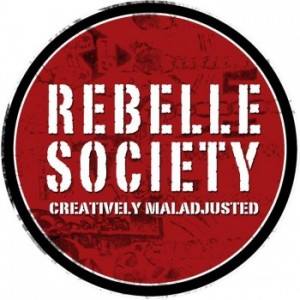They Thought Their Art Would Protect Them.

{source}
Frida Kahlo knew, when she met Diego Rivera in 1929, that he had a reputation as an incorrigible philanderer.
She was not in a position to change him though — her 1925 bus accident had left her with medical bills that would make it impossible for her to ever assert her independence. She took him as a lover and then as a husband, nonetheless. She let him go to other women, and she famously turned her marriage into a carnivalesque, devil-may-care performance.
She out-flirted her rivals, she mothered and babied her husband, and turned to her art to distract herself from betrayal and loneliness.
When Rivera humiliated her by taking her sister, Cristina, as a lover, Frida revenged herself by taking his idol, Leon Trotsky, as a lover. The façade of irreverent rebellion against bourgeois norms was hard to sustain though. Frida suffered prolonged periods of depression as her health declined. More than once, she attempted suicide to win Rivera’s attention back from his lovers.
Georgia O’Keeffe was a 28-year-old art teacher when 52-year-old Alfred Stieglitz plucked her out of obscurity in 1915. She may not have known that Stieglitz had just concluded an affair with another painter, Katherine Rhoades, who was about her age, and who’d just burned her paintings and left New York.
But O’Keeffe certainly knew that Stieglitz was married when she moved into a New York studio he had arranged for her through an anonymous patron. She took him for a lover, and gave their sexual intimacy to his camera. In 1921, he exhibited 300 images of her — many nudes, exposing her to snickers in the New York art world, though one woman left the show in tears, saying, “He loves her so.”
O’Keeffe harnessed this publicity in flower paintings that were simultaneously sexual and chaste. Stieglitz promoted her as a priestess of American art, allowing her to command huge sums for her work.
When Stieglitz took 22-year-old heiress Dorothy Norman as a lover though, he initiated the affair by brushing Dorothy’s breast with his finger, asking her if she had enough milk for her child. O’Keeffe did not fight him, for he typically responded with cruel counterattacks. She simply left New York for New Mexico. “The city is hard,” she said, with characteristic understatement.
Sartre and Beauvoir were both determined to have a wide experience of love and life, and they refused to marry in favor of openly taking lovers — and openly discussing their affairs. Beauvoir seduced her female philosophy students, and described her affairs to Sartre in long letters while he was a prisoner of war. When he returned to Paris, he took her lovers in turn.
These affairs caused more than one nervous breakdown among the young women, and got Beauvoir fired from her teaching job. Sartre had only one brief qualm of conscience about his behavior, but Beauvoir admitted that they could be reproached for their actions.
She wrote The Second Sex, a landmark study intended to separate the sexist past from a feminist consciousness that was gestating in the post-war moment.
The story feminists have mostly told is that Frida’s diaries, O’Keeffe’s paintings, or The Second Sex, have armed women against the sexism of the past, opening the door to a safer future.
But this story overlooks the reality that the women could only speak out once they had endured the sexual misconduct long enough to achieve a position of independent power from which to tell their own stories, then everyone else’s.
Not everyone is so lucky. The price of success is often silence, as Rose McGowan found when she accepted a settlement from Harvey Weinstein, on condition that she sign a gag order. Weinstein’s company simply wrote sexual abuse into his contract: as long as he could pay, his company would ignore his “violations of the company’s Code of Conduct.”
This news about Harvey Weinstein — and now the rest — should not surprise anyone. It is a stern reminder that we need to keep sketching out a world that includes women’s safety and trust among the measures of success.
It may be the case that every generation has to discover sex — and power and the abuse of power — for the first time, but it is also true that our culture prides itself for having changed the way people think about race and power, and instituted protections for people who never had any protections.
We need to change our culture’s consciousness on the subject of sex and power.
Artists are the ones to lead the way, for their work has always brought the stories of power and desire, of shame and betrayal, out of the shadows and silence. Our job now is to tell those stories so widely that we understand them reflexively. Only then can art finally move on, to flow from other sources, to express new experiences, to articulate and expose other traumas.
We have seen glimpses of creativity in this medium — in artists’ lives, works and relationships — but the world is hungry for much more work in this vein. The toxic stories that are coming to light now are a challenge to every artist — to every representative, gallery owner, theater director, art buyer, and audience member — to envision, to demand, to create, to patronize that art.
That new world itself is an artwork we have dreamed of for far too long. Who will create it?
***
Dr. Daniel Bullen is the author of two books: The Love Lives of the Artists: Five Stories of Creative Intimacy (Counterpoint, 2011) and The Dangers of Passion: The Transcendental Friendship of Ralph Waldo Emerson & Margaret Fuller (Levellers, 2012). His history of the nonviolent protests known as Shays’ Rebellion will be published this fall. He holds a Ph.D. in American literature, and lives in western Massachusetts.
***
{Join us on Facebook, Twitter, Instagram & Pinterest}

